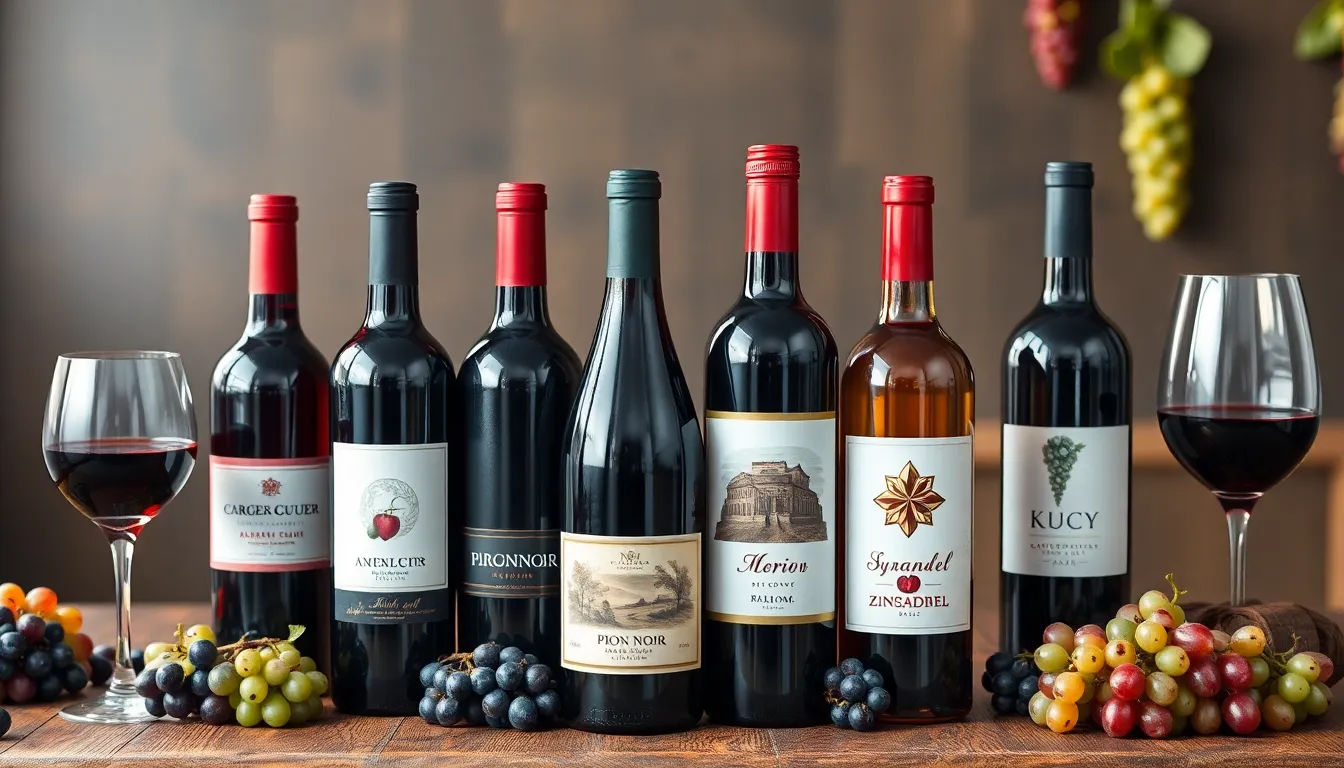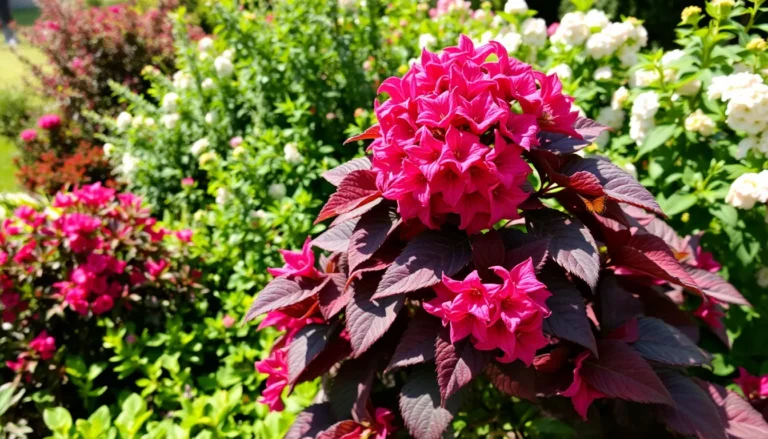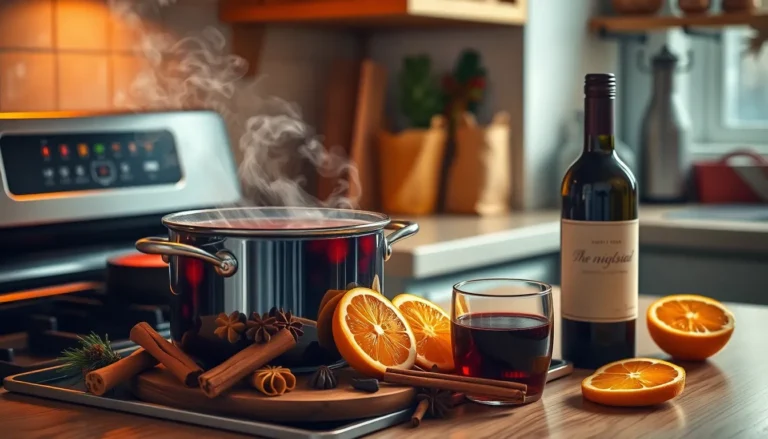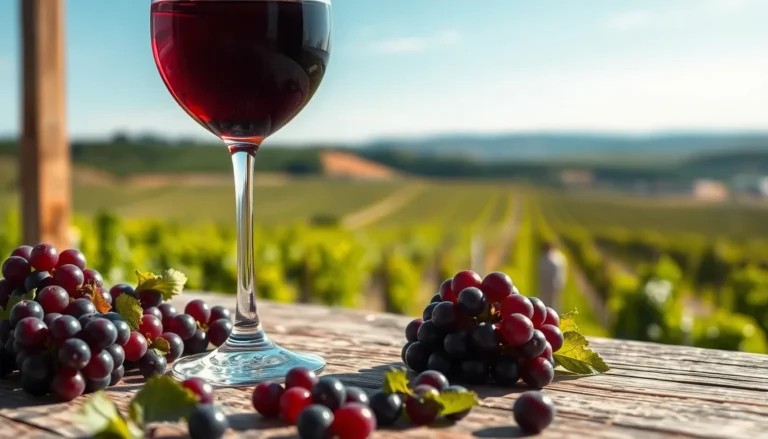When it comes to wine, choosing the right type can feel like navigating a maze blindfolded. With so many varieties out there, it’s easy to get lost in a sea of reds, whites, and rosés. But fear not! Whether you’re a seasoned sommelier or just someone who enjoys a good glass after a long day, understanding wine types can elevate your sipping experience from “meh” to “magnificent.”
wine type
Selecting the right type of wine involves understanding various classifications and influences. Familiarity with basic wine types helps enhance wine appreciation.
The Basics of Wine Classification
Wines generally fall into four main categories: red, white, rosé, and sparkling. Red wines derive from dark-skinned grapes, whereas white wines come from green or yellow grapes. Rosé wines, created by allowing grape skins to contact the juice for a short time, offer a unique flavor profile. Sparkling wines contain carbon dioxide, resulting in characteristic bubbles. Classification may also occur based on region, varietal, and winemaking techniques. Notably, regions like Bordeaux and Napa Valley are known for specific grape varieties, such as Cabernet Sauvignon and Merlot.
Factors Influencing Wine Types
Several factors influence the type of wine produced. Climate significantly determines grape growth, with warmer regions typically producing sweeter wines. Soil composition affects the minerals that grapes absorb, impacting flavor. Winemaking techniques, including fermentation methods and aging processes, further shape each wine’s characteristics. Additionally, varietal differences in grapes create distinct flavor profiles, ranging from fruity to earthy. Ultimately, each element contributes to the complex world of wine, offering diverse options for exploration and enjoyment.
Red Wine Types

Red wine, made from dark-skinned grapes, offers a range of flavors, aromas, and textures. Understanding the various types can enhance appreciation for these complex offerings.
Popular Varieties
Cabernet Sauvignon stands among the most popular red wine varieties. It features bold flavors, often with notes of blackberry and cassis. Merlot, known for its softer profile, brings hints of plum and chocolate. Pinot Noir, light and elegant, presents flavors of cherry and raspberry. Syrah, or Shiraz, delivers spiciness along with dark fruit flavors. Zinfandel offers a fruit-forward experience, showcasing jammy berries and spice. Each variety possesses distinct characteristics, appealing to different palates.
Characteristics of Red Wines
Red wines possess unique characteristics defined by grape variety, region, and winemaking techniques. Tannins, responsible for structure, contribute to the astringent sensation. Acidity provides balance, enhancing freshness. The color varies from deep crimson to lighter ruby, influenced by grape skin extraction. Aroma profiles range from fruity and floral to earthy and spicy, reflecting terroir influence. Aging in oak barrels often adds layers of complexity, imparting flavors like vanilla or toast. Overall, red wines exhibit a broad spectrum of sensory experiences.
White Wine Types
White wines offer a diverse selection that enhances any occasion. These wines stem from various grape varieties, resulting in unique flavors and aromas.
Common Varieties
Chardonnay remains one of the most popular white wine varieties. Known for its versatility, Chardonnay displays flavors ranging from green apple to tropical fruits. Sauvignon Blanc stands out with its zesty acidity and herbal notes. Riesling is famous for its aromatic profile, often showcasing floral and stone fruit characteristics. Pinot Grigio captivates with its light and crisp qualities, making it a favorite in warm weather. Each variety provides distinct taste experiences, appealing to different preferences.
Tasting Notes for White Wines
Tasting notes for white wines encompass a wide range of flavors. Chardonnay often features notes of vanilla and butter when aged in oak. Sauvignon Blanc brings forth crisp citrus flavors, sometimes accompanied by grassy undertones. Riesling, with its sweetness, often displays hints of peach and apricot, balanced by refreshing acidity. Pinot Grigio typically presents clean flavors of pear and apple, providing a refreshing finish. These tasting notes enhance the enjoyment and appreciation of each wine variety.
Sparkling Wine Types
Sparkling wines are characterized by their effervescence, which comes from carbon dioxide. Many enjoy these bubbly beverages for their vibrant flavors and celebratory nature.
Key Varieties
Champagne leads the list, originating from the Champagne region of France. Prosecco, known for its fruity notes, hails from Italy and offers a more accessible option. Cava, a Spanish sparkling wine, presents crisp citrus flavors and a refreshing finish. Crémant refers to sparkling wines produced in various regions of France outside Champagne, often providing excellent quality at lower prices. Each variety showcases distinct characteristics based on its region and production methods.
When to Enjoy Sparkling Wines
Sparkling wines fit various occasions, from casual gatherings to formal celebrations. They complement appetizers like cheese and charcuterie boards effortlessly. Many enjoy them during toasts at weddings or milestones, adding flair to the festivities. Additionally, these wines pair well with desserts, enhancing sweet flavors. Their versatility makes them suitable for brunch, making a crisp Mimosa a classic choice.
Dessert Wine Types
Dessert wines provide a sweet finish to any meal, often enjoyed after dinner. These wines amplify flavors, enhance desserts, and appeal to a variety of palates.
Sweet Varieties
Moscato represents an excellent sweet variety, known for its fruity and floral notes. Ice wine, made from grapes frozen while still on the vine, delivers intense sweetness and luscious flavors. Port wine offers rich, deep flavors with its fortified nature. Sauternes, originating from Bordeaux, showcases honey-like sweetness and complexity. Tokaji, a Hungarian wine, provides vibrant acidity that balances its sweetness. Each of these varieties highlights unique characteristics, making them ideal for dessert pairings.
Pairing Dessert Wines
Various desserts complement dessert wines beautifully. Rich chocolate desserts pair well with Port and robust red dessert wines. Citrus-based desserts, like lemon tart, enhance with a sweet Riesling or Moscato. Creamy desserts, such as cheesecake, work harmoniously with Sauternes. Fruits and tarts also shine alongside a glass of ice wine or Moscato, with their sweetness enhancing the flavors. Artfully pairing these wines can elevate the dessert experience, creating lasting impressions.
Conclusion
Navigating the diverse world of wine types can be an exciting journey. Each category offers unique experiences that cater to different tastes and occasions. Understanding the characteristics of red, white, rosé, sparkling, and dessert wines empowers individuals to make informed choices.
By exploring various varietals and their flavor profiles, wine enthusiasts can enhance their appreciation and enjoyment. Whether it’s a bold Cabernet Sauvignon or a sweet Moscato, the right wine can elevate any meal or celebration. Embracing this knowledge not only enriches personal experiences but also opens the door to sharing delightful moments with others.




